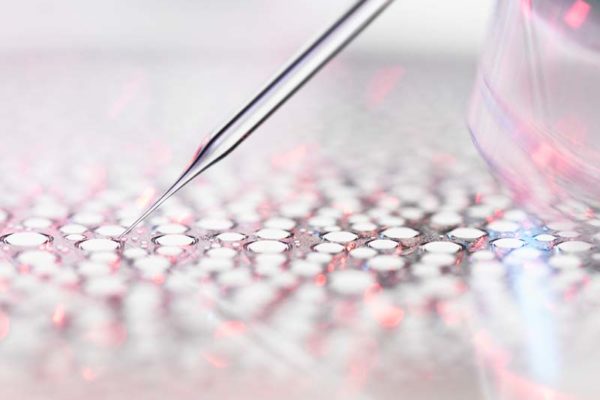CHORDS uses the polymerase chain reaction to both synthesise a DNA sequence containing the desired guide RNA and to incorporate specific recognition sites into the strand. Golden gate cloning is then used to assemble and express 12-24 guide RNAs.
Proposed use
The technology can be applied to a wide range of applications including:
- Assembly of any DNA sequence consisting of a repetitive region flanked by short variable region
- Assembly of DNA sequences for applications in vivo or in vitro origami
- Linking together high numbers of RNA aptamers.
Problem addressed
CRISPR is a widely used method of gene editing achieved by delivering a Cas9 nuclease enzyme and synthetic guide RNA into a cell to modify the genome at specific locations. During the process, guide RNAs are used to direct CRISPR/Cas9 to cleave specific complimentary strands of DNA within an organism.
The expression of synthetic guide RNA is a significant challenge. Whilst single guide RNAs are simple to express, guide RNA multiplexing is much more complex. Two alternative guide RNA multiplexing methods are currently in use. However, these methods are limited to the production of only 8-10 guide RNAs. These methods also require a DNA template consisting of a guide RNA hairpin, transcriptional stop signal, and a human U6 promoter for each guide RNA sequence added.
Technology overview
A team at Imperial College London has developed a method of assembling a large number of guide RNA fragments using a dual CRISPR/Golden gate assembly method.
Using a plasmid template, a 20-base pair guide RNA sequence is made by the polymerase chain reaction. The guide RNA sequence is then incorporated by a forward primer and amplified away from a green fluorescent protein gene. As a next step, phosphorylated reverse primer enables the generation of a linearized vector and removal of the green fluorescent protein. This forms a DNA sequence containing the desired guide RNA.
Further, a second polymerase chain reaction is used to add BsmBl overhangs, to act as recognition sites. Finally, a promoter, a GFP dropout and 3’ Csy4 recognition site are used to clone the guide RNAs by a golden gate assembly method. This method can assemble and express up to 12-24 guide RNAs from a single promotor.
Benefits
- Assembly and expression of 12-24 guide RNAs from a single promotor
- Can be performed in a single day
- No requirement of entry and destination vectors for each DNA fragment
- No requirement for multiple rounds of transformations or sequence-verification
- Compatible with yeast toolkit, E. coli, and mammalian cells
- Assembled DNA can be quickly swapped into other plasmids with no need for further assembly and sequence-verification
- Low cost – £2 per DNA fragment
Intellectual property information
This technology is protected by patent application (priority application number GB 1817010.0).





